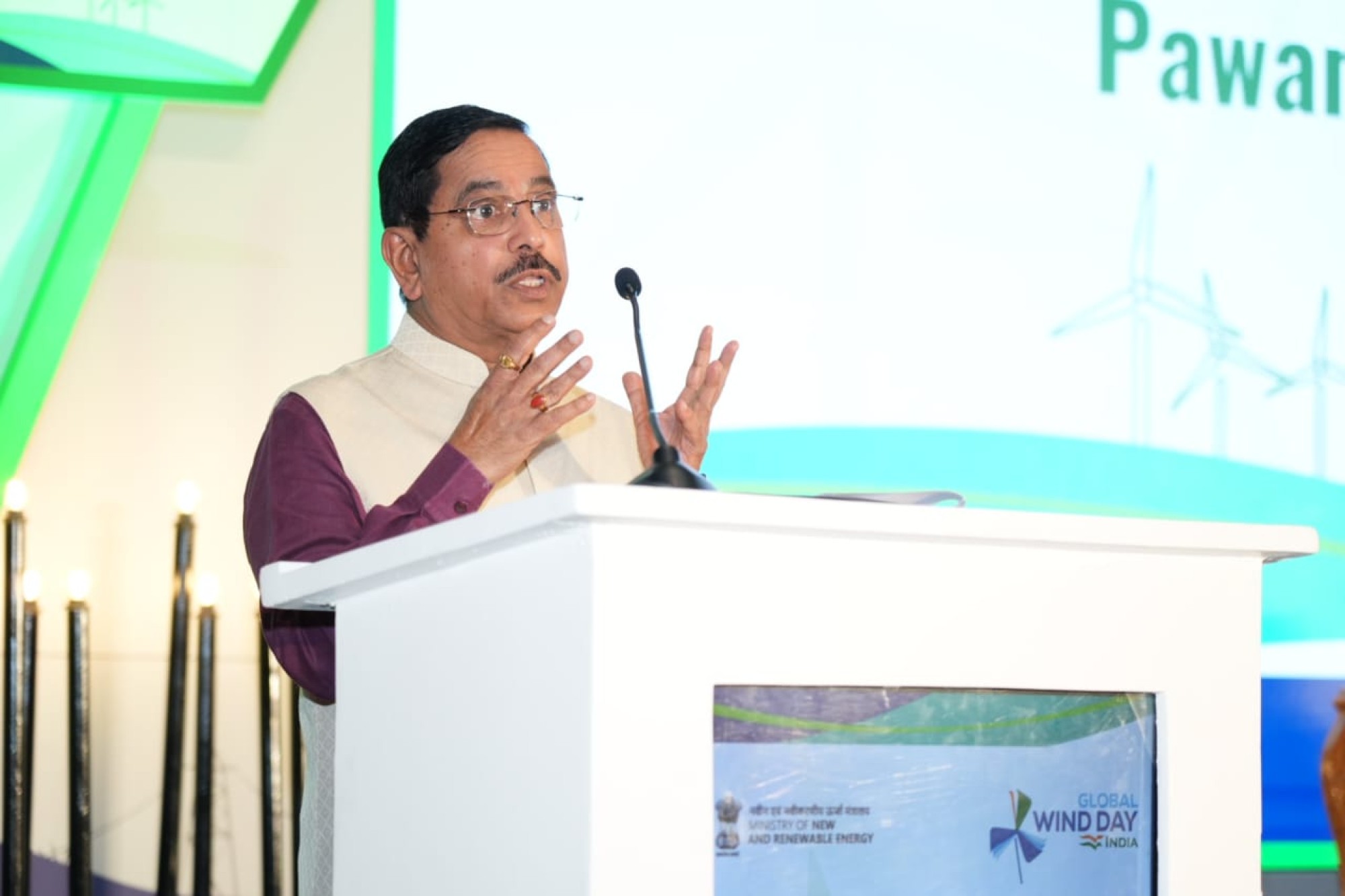Wind energy central in achieving renewable energy goals by 2030: Minister Pralhad Joshi
By Staff Report June 18, 2025 12:10 pm IST
By Staff Report June 18, 2025 12:10 pm IST

India has made significant progress in turbine manufacturing, producing models from 225 kW to 5.2 MW through 14 companies, serving both domestic and global markets.
Marking Global Wind Day 2025, Union Minister of New and Renewable Energy Pralhad Joshi emphasised the pivotal role of wind energy in the renewable future of the country at a high-level stakeholders’ conference in Bengaluru. Stressing that wind energy is not merely a part of but central to the renewable energy strategy, the Minister called for a unified push to expand capacity, reduce tariffs and strengthen domestic manufacturing.
Union Minister of State for New and Renewable Energy Shripad Yesso Naik and Karnataka’s Energy Minister K.G. George were also present.
“Our national goals are ambitious and clear: 50 percent of our power capacity from non-fossil fuel sources by 2030, and a net-zero India by 2070. Wind energy is central to achieving these goals. Wind energy is not a component of our renewable energy strategy but it is at the heart of it and at the centre of Atma Nirbhar Bharat,” said Minister Joshi. Underlining the vision of Prime Minister Narendra Modi, Joshi said, “ Hon. PM Shri Narendra Modi gave us a vision to have ‘renewable energy for manufacturing and conventional energy for household consumption’.”
Outlining the government’s roadmap for the wind energy sector, the Minister identified three pressing challenges that need immediate attention. The first is the integration of wind with solar power and battery energy storage systems (BESS) to ensure round-the-clock electricity supply and enhance grid stability. The second challenge involves reducing the current tariff of ₹3.90 per unit to more competitive levels, making wind energy more affordable and commercially viable. The third key area is improving the efficiency of domestic manufacturing, not only to meet the country’s growing energy demands but also to strengthen India’s position as a global exporter of wind energy technologies.
With a 53 percent increase in the renewable energy budget this year, taking it to ₹26,549 crore, Joshi said the government is fully backing the sector, particularly wind. “States must now lead this transition. We can no longer afford delays in land and transmission access,” he asserted.
India has made significant progress in turbine manufacturing, producing models from 225 kW to 5.2 MW through 14 companies, serving both domestic and global markets.The Minister highlighted five national priorities to unlock India’s wind energy potential. First, the government aims to expand wind energy deployment to new states including Madhya Pradesh, Telangana, and Odisha, thereby broadening the geographic footprint of wind power. Second, India is set to launch its offshore wind sector, with 4 GW of leasing areas already identified off the coasts of Gujarat and Tamil Nadu. Third, the focus is on developing storage-linked green power supply models to ensure round-the-clock renewable energy delivery. Fourth, there is a push to modernise the power grid through the integration of AI-based forecasting tools to better manage the variability of wind power. Lastly, the government is committed to strengthening local manufacturing across the entire wind energy value chain to support self-reliance and boost global competitiveness.
At the event, Joshi also released two key documents: the Wind Energy Roadmap and the Wind Manufacturing Roadmap, calling them “guiding frameworks” for a self-reliant wind energy ecosystem.
The conference concluded with a felicitation of top-performing states in wind capacity addition. Karnataka led with 1,331.48 MW, followed by Tamil Nadu (1,136.37 MW) and Gujarat (954.76 MW).
We use cookies to personalize your experience. By continuing to visit this website you agree to our Terms & Conditions, Privacy Policy and Cookie Policy.